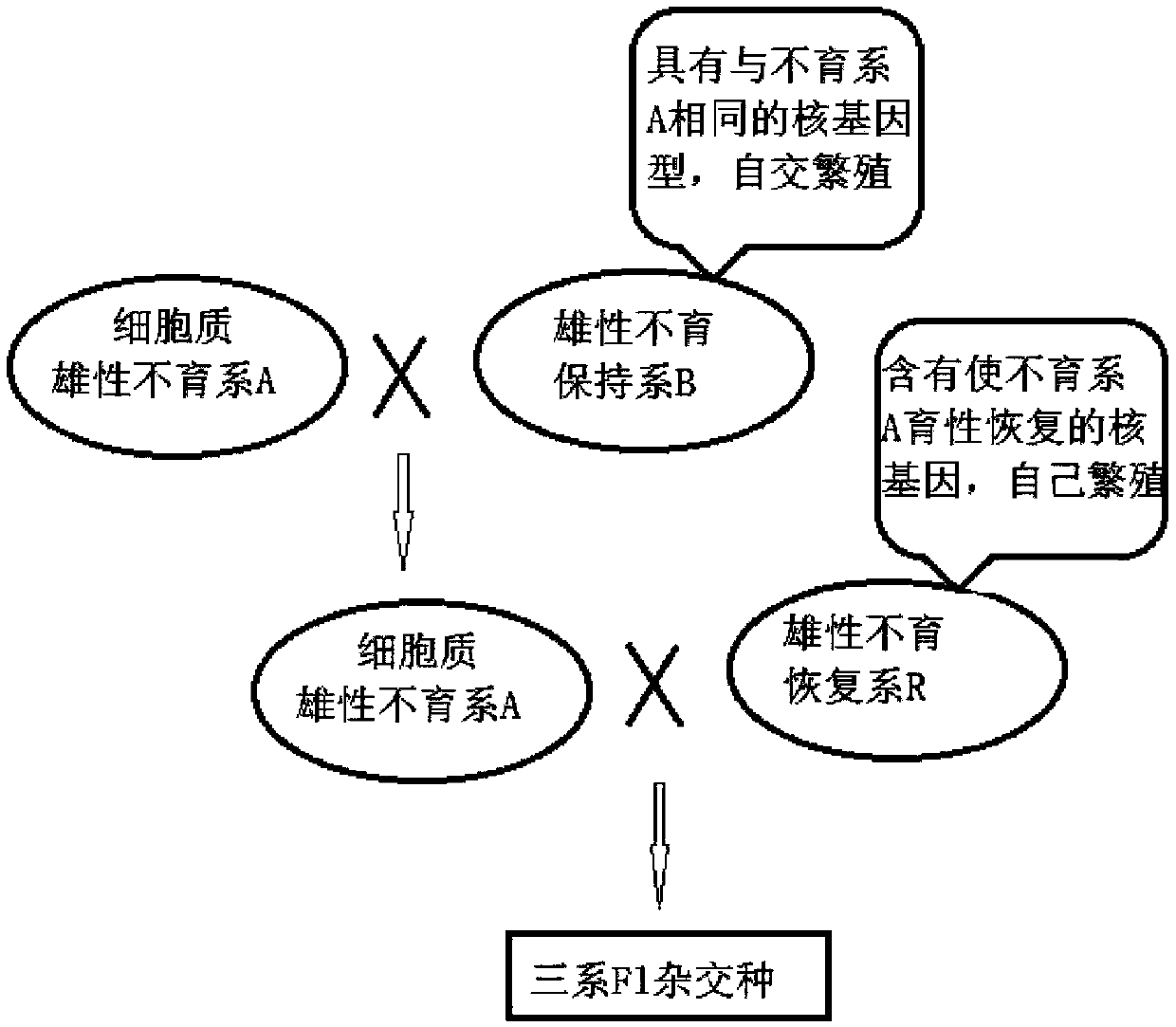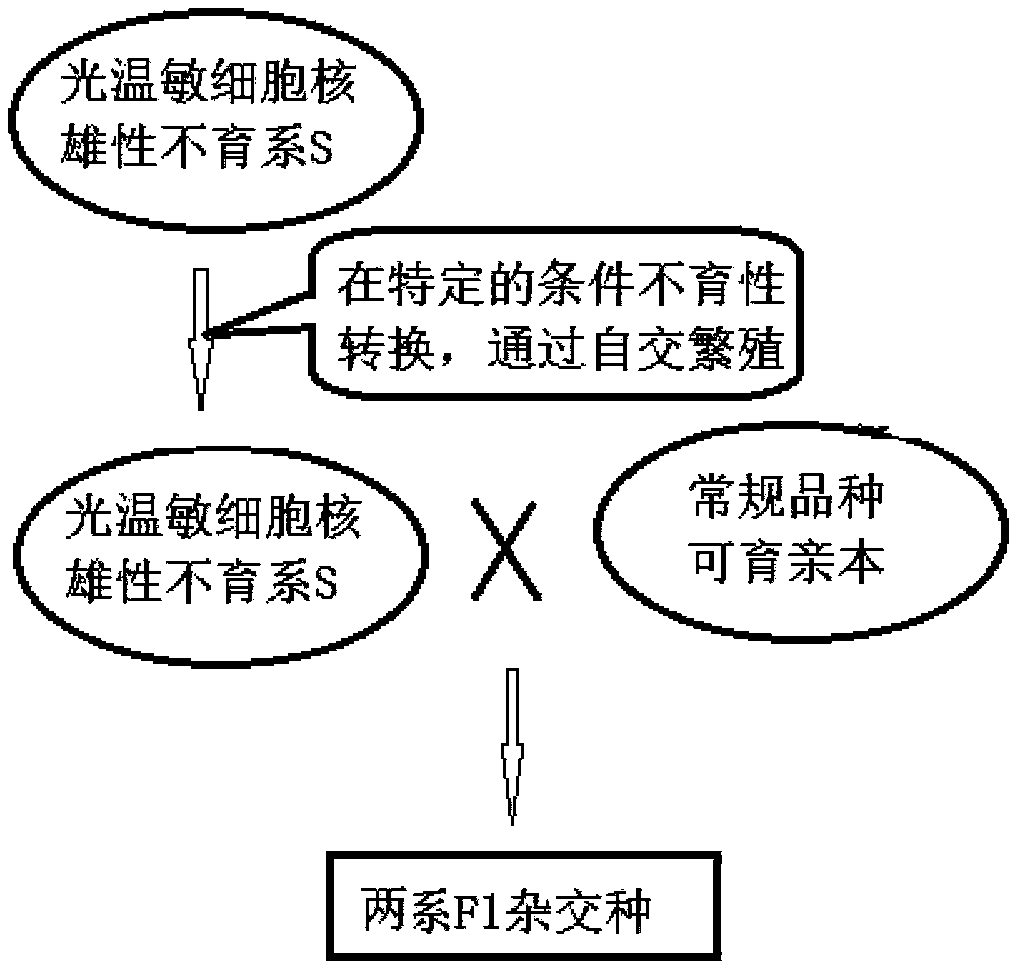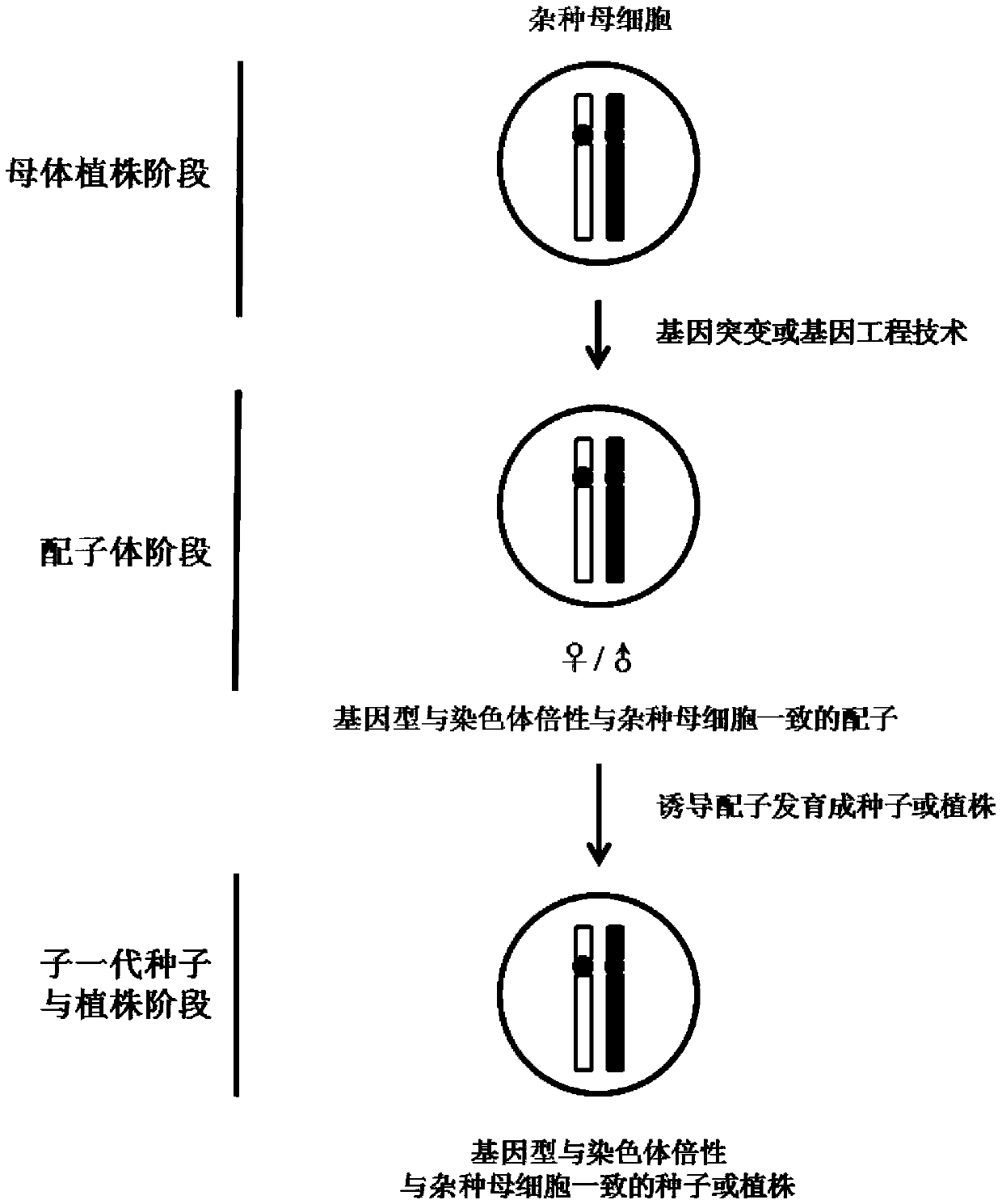Method for utilizing plant heterosis
A technology of heterosis and plants, applied in the biological field, can solve the problems of consuming manpower, material resources and land resources, the purity of hybrid seeds is not up to standard, and the utilization rate of germplasm resources is low
- Summary
- Abstract
- Description
- Claims
- Application Information
AI Technical Summary
Problems solved by technology
Method used
Image
Examples
Embodiment approach
[0119] According to a typical embodiment of the present invention, the method includes the following steps: S1, using gene mutation or genetic engineering technology to transform the meiosis of the germ cells of the hybrid into similar mitosis to obtain the genotype and chromosomal ploidy of the hybrid identical gametes; and S2, inducing gametes to develop into seeds or plants.
[0120] Applying the technical solution of the present invention, the hybrid can produce cloned seeds or plants that are completely consistent with its own genotype, so that the hybrid can be used for a long time, and solve the problem of crossing between parents due to inconsistent flowering periods and other reasons in the use of heterosis. low yield and high cost of hybrids.
[0121] According to a typical embodiment of the present invention, S1 includes taking a hybrid, using genetic mutation or genetic engineering technology to convert the meiosis of its germ cells to similar to mitosis, so as to ...
Embodiment 1
[0205] 1. In this example, the F 1 The hybrid is the approved and commercialized hybrid rice variety Chunyou 84. Chunyou 84 is a new japonica-non-indica-recovery interspecies hybrid rice combination bred by the early-flowering and late-japonica CMS line Chunjiang 16A and the indica-japonica intermediary wide-compatibility restorer line C84. The hybrid rice has the advantages of large yield potential, high seed production yield, excellent comprehensive agronomic traits, good blast resistance, wide adaptability and the like. The genetic transformation background material used in this example is the hybrid rice F 1 The callus obtained by seed induction has not gone through the sexual reproduction stage, therefore, the transgenic T 0 The genetic background of the generation material is similar to that of the hybrid rice F 1 Plants consistent.
[0206] 2. Construction of multiple gene knockout vectors.
[0207] The main steps are as follows (see also CN201510485573.2 for detai...
Embodiment 2
[0239] 1. In this example, the maintainer line Chunjiang 16B and the intermediary indica-japonica wide-compatibility restorer line C84 were used. The background material of genetic transformation used in this example is the callus induced by parental seeds.
[0240] 2. Construction of multiple gene knockout vectors.
[0241] The main steps are as follows
[0242] 1) Construction of a single target SK-gRNA:
[0243] The following four sites were selected as the sites for knocking out REC8, OSD1, PAIR1 and MTL by the CRISPR-Cas9 gene editing system (the PAM sequence indicated by the underline):
[0244] OSD1 gene knockout site (SEQ ID NO: 1): CTGCCGCCGACGAGCAACA AGG
[0245] PAIR1 gene knockout site (SEQ ID NO: 2): AAGCAACCCAGTGCACCGC TGG
[0246] REC8 gene knockout site (SEQ ID NO: 3): CCCATGGCACTAAGGCTCT CCG
[0247] MTL gene knockout site (SEQ ID NO: 4): GGTCAACGTCGAGACCGGC AGG
[0248] Design two complementary DNA sequences: add GGCA before the forward sequence...
PUM
 Login to View More
Login to View More Abstract
Description
Claims
Application Information
 Login to View More
Login to View More - R&D
- Intellectual Property
- Life Sciences
- Materials
- Tech Scout
- Unparalleled Data Quality
- Higher Quality Content
- 60% Fewer Hallucinations
Browse by: Latest US Patents, China's latest patents, Technical Efficacy Thesaurus, Application Domain, Technology Topic, Popular Technical Reports.
© 2025 PatSnap. All rights reserved.Legal|Privacy policy|Modern Slavery Act Transparency Statement|Sitemap|About US| Contact US: help@patsnap.com



